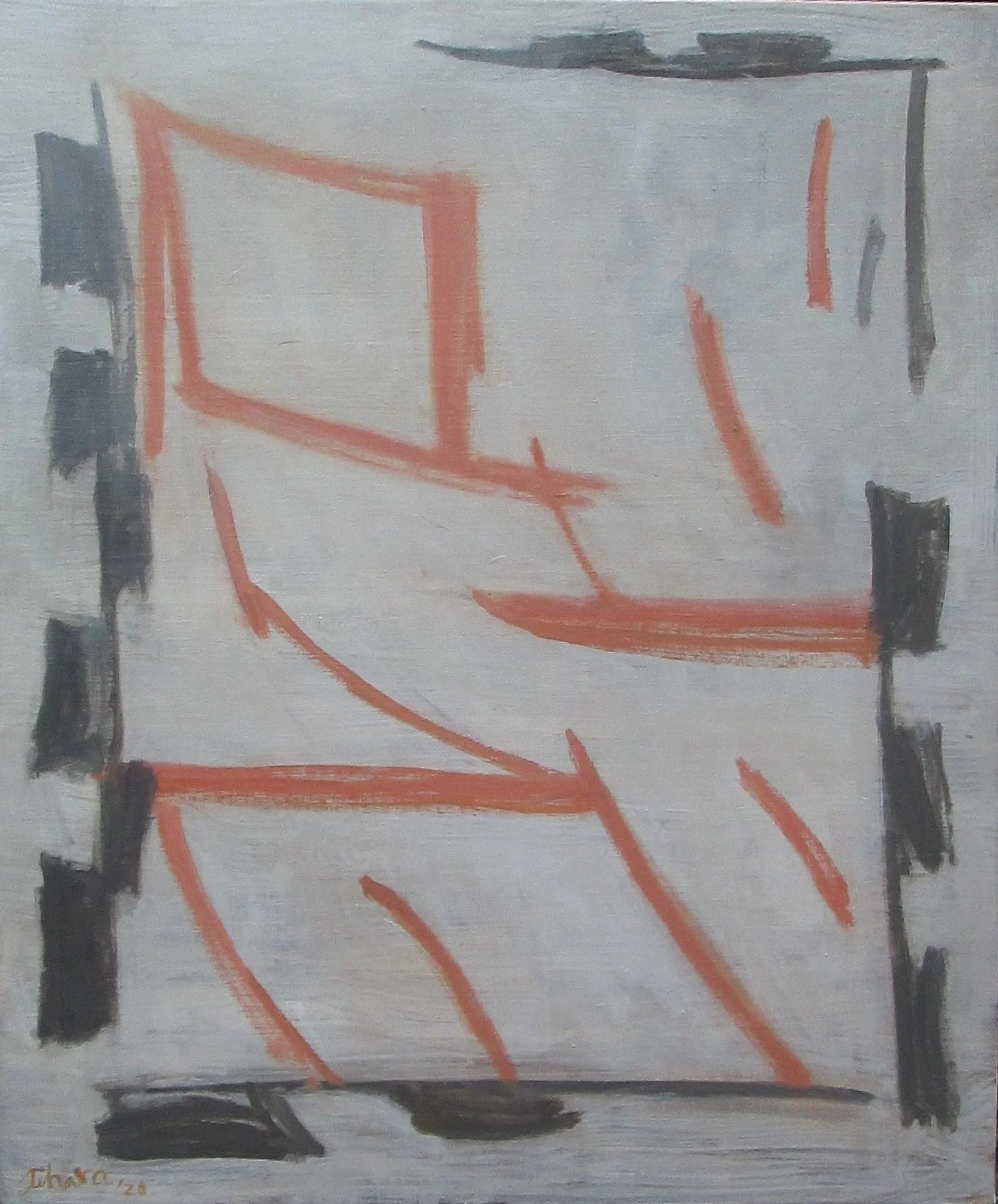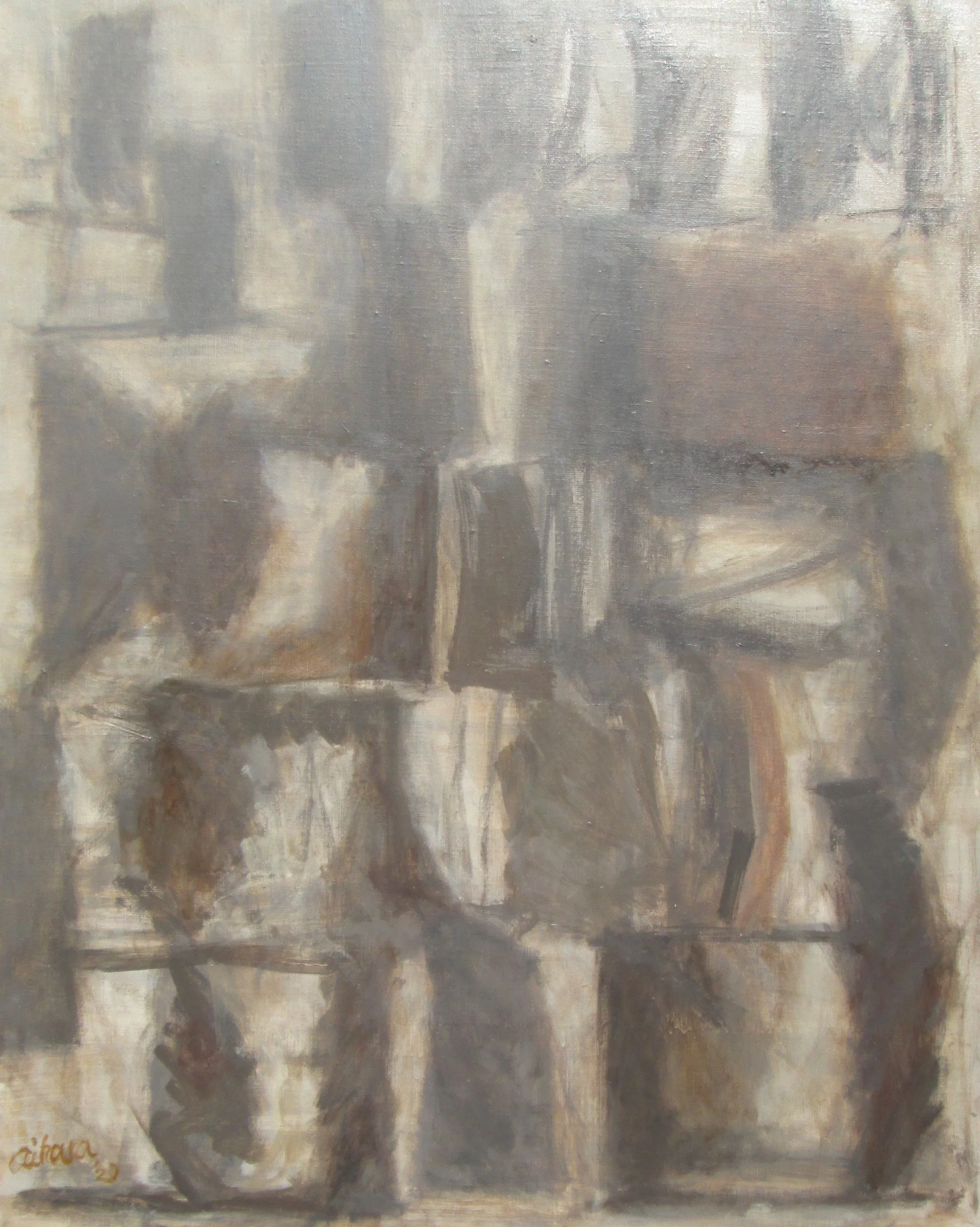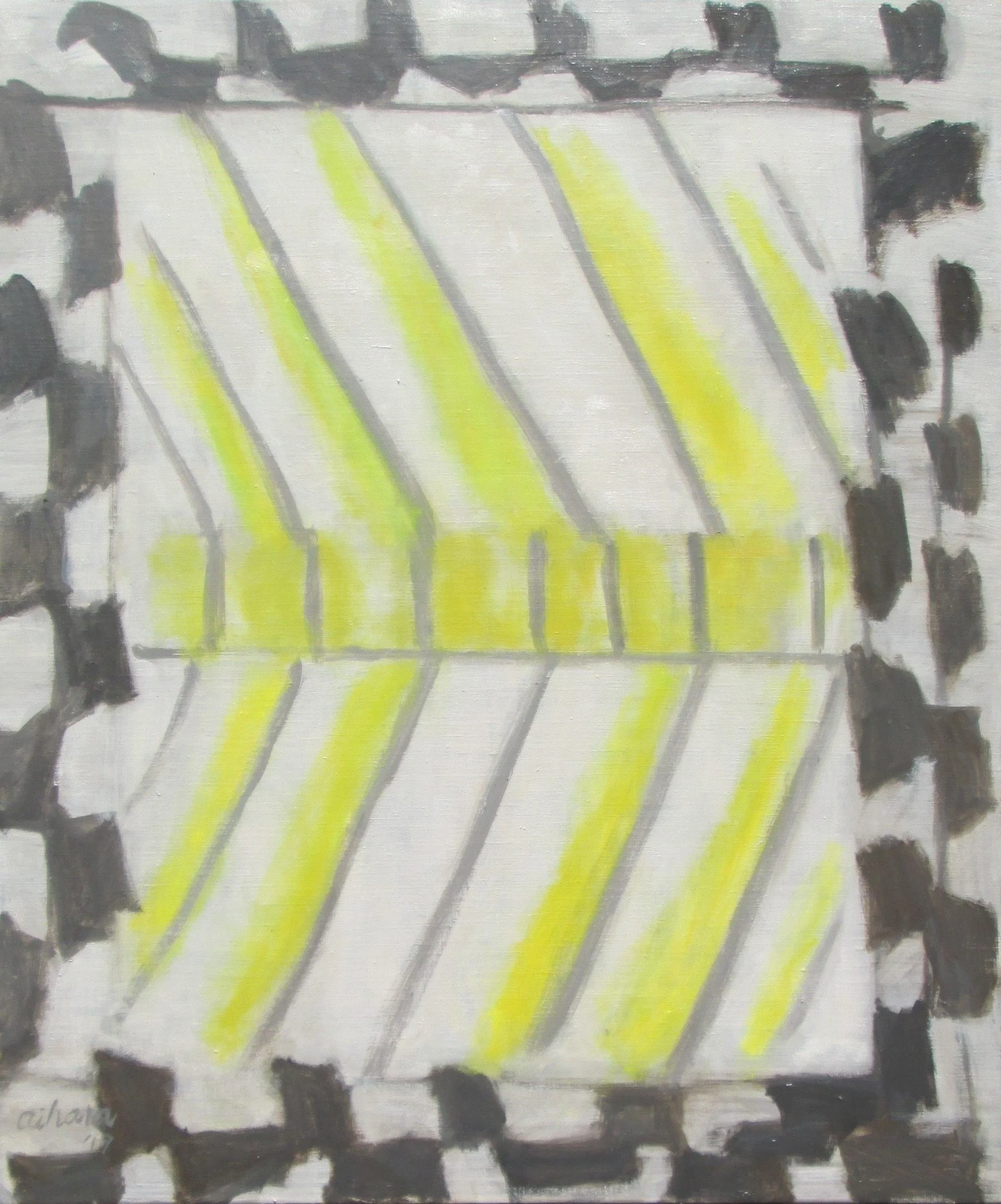Misa Aihara
Born in 1942 in Ibaraki Prefecture, Japan. I live and work in Funabashi, Japan. After graduating from Joshibi Univ. of Art & Design, Tokyo, I began my artistic career. I worked as an art teacher for 7 years. Then I travelled to some African countries. The journey made a great impression on me. After that, I stayed in London for 4 years. I produced print works, visited many museums and learned about European old masters. I came back to my home country in 1975. I have participated in several solo and group exhibitions in my home country, in Italy, Germany, Austria, Portugal, the UK, and the USA. I have attended prestigious art events including the Florence Biennale, the London Art Biennale, the Art Expo New York, Spectrum in Miami, Chianciano Art Awards, among others.
Misa, much of your practice seems to hover at the threshold where chaos and order touch, where gesture becomes both unpredictable and precise. Do you imagine your canvases as spaces where the great polarities of human existence, instability and form, freedom and structure, find temporary reconciliation, or do you see them more as eternal theaters where such opposites endlessly contend?
I view my canvases as eternal theatres where opposing forces constantly clash. I often start with a specific idea and goal, but as I work, I sometimes lose sight of that goal in the chaos. However, at times, the energy from this chaos inspires me to push forward and rediscover the goal to complete my work.
Over the arc of five decades, your paintings have absorbed the shifting atmospheres of history while maintaining an unmistakable inner voice. Do you think of your artistic life as a single continuous current flowing through time, or as a constellation of luminous fragments, each work carrying its own distinct world yet belonging to a larger vision of perception and being?
My artistic life is a single continuous current flowing through time. I have always tried liberating myself from an established concept of art.
Viewers and critics alike often describe the musicality embedded in your paintings, the unseen harmonies between brushstroke and silence, rhythm and pause. When you paint, do you feel that you are composing in color as one might compose in sound, and does abstraction offer you a freedom similar to that of music, a freedom that transcends words, narrative, and representation?
I compose on a canvas as one might compose in sound. Each element on the canvas, like color, forms, brushstrokes, texture, etc. is as if elements in music. Abstraction offers me a freedom like that of music. Also, words inspire me. Even your phrase “between brushstroke and silence” touches my inspiration.
In the process of creation, you have spoken of the catalytic moment when a minor gesture, a flicker of color, a delicate adjustment in form, becomes the point from which the entire painting blossoms. Do you experience these revelations as sudden eruptions of intuition, as echoes of unconscious thought, or as intimations of a spiritual order that exceeds rational explanation?
I experience the revelations in all the situations mentioned here. I have stocks of sketches which I have recorded a composition anytime in my everyday life. They are often in form of pieces. I often watch them and think of why a piece attracts me. I analyze my feeling, my inclination. I connect some pieces together Along my inner voice. I make a new composition using them. I start a paint with doubt, whether the composition could be worth for an artwork. There I try searching a way of making it worth as an artwork.
Your painting Verko G-11, honored with the Future of Art Global Masterpiece Award, stands as a testament to the eloquence of restraint, a limited palette unfolding into vast emotional terrain. How do you understand the paradox that simplicity of means often yields the greatest complexity of meaning, and how do you cultivate the quiet intensity that allows a single color, or a single form, to reverberate infinitely?
I was brought up in the culture of these characteristics. It is my nature. You can find these characteristics in Japanese culture, like the Noh play. *Noh play: A major form of classical dance-drama that has been performed since the 14th Century. It’s Japan’s oldest theatre art that is still regularly performed today.
Your works are often spoken of as invitations rather than objects, portals that lead the viewer inward toward deeper layers of perception. In your mind, what role does the viewer truly play in the life of a painting? Are they witnesses, interpreters, or co-creators who bring the work into being through their own emotional and imaginative participation?
In my mind the viewers would be co-creators. Otherwise, they might see the work as a simple geometric pattern. I expect their emotional and imaginative Participation.
The question of completion haunts abstract art. Can a work ever be said to be finished, or is it only released at the moment when the artist must let go? For you, does a painting ever arrive at finality, or do you conceive of each canvas as a temporary resting point in a continuum of searching that remains forever unfinished?
I think each painting should have its own story and its end. One who cannot ever finish a painting, often loses what to tell.
Having exhibited across continents, from Tokyo to Florence, London to New York, your paintings have entered into dialogue with diverse cultural imaginations. Do you perceive that your works speak differently in each context, reflecting back the character of their surroundings, or do they reveal to you the universality of a language that transcends borders and time?
I perceive that the viewers react individually to my paintings. It somehow shows that my paintings reveal to me the universality of a language that transcends borders and time.
Color in your practice has never been merely decorative, but rather a philosophical medium, charged with spiritual and emotional density. Could you share how you approach color as content in itself, as an autonomous language capable of articulating truths that evade verbal articulation, and how you sense these chromatic dialogues reverberating through the consciousness of the viewer?
How do I approach colour as content itself? The selection of colour is always an essential job. It governs the character of a vision. I imagine the final figure of a vision and take enough time to decide. After that, I work as I feel.
Looking across the long trajectory of your career, from your early beginnings in the 1970s to the present moment of international recognition, what remains for you the primal, unchanging impulse to paint? Do you see it as an intimate necessity, as a dialogue with the history of art, or as a greater vocation to expand the possibilities of vision for those who encounter your work?
I might see it as a vocation to expand the possibility of vision. But to say honestly, I like to see what I will see after my exploration; that could be what art is for humans.










